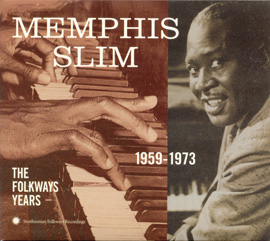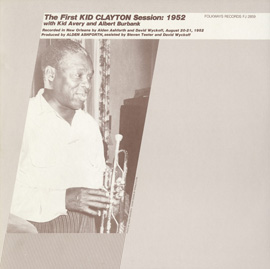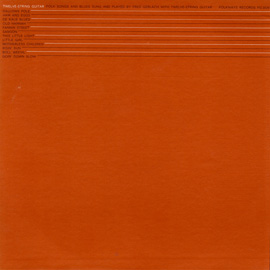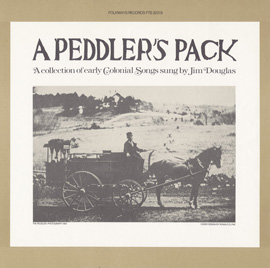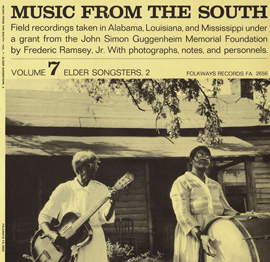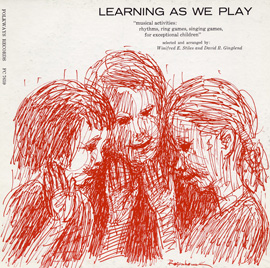Summary
Learning 12-bar blues form though singing and theory provides students a medium for discussion of the blues. Students will have the opportunity to write and perform their own 12-bar Blues verses.
Suggested Grade Levels: 6-8, 9-12
Country: United States
Region: Southern United States, North America
Culture Group: African-American
Genre: Blues, Jazz
Instruments: Voice, Percussion
Language: English
Co-Curricular Areas: Social Studies, English
National Standards: 1, 6, 8, 9
Prerequisites: General knowledge of origin of the blues, 12 bar form, and vocal AAB form
Objectives:
- While listening to Good Morning Blues, count the 12 bar blues pattern and identify the I, IV, V chords by pointing to them as they are heard (on the handout)
- Identify the AAB lyrics form by writing A or B at the beginning of each line on the lyrics sheet
- Sing along to the AAB form when played
- Discuss how the B section relates to the A section through meaning, rhyme, and meter
- Write an original B lyrics section after reading the A lyrics section from “Prison Bound”, before hearing or seeing lyrics from original recording (sheet attached)
- Share and positively critique self/others on the connection between A and B sections
- Listen and follow text (attached, taken from liner notes) to “Prison Bound” and discuss original lyrics meaning, rhyme, and meter
- Listen and follow text (attached, taken from liner notes) to “Working People’s Blues” and discuss original lyrics meaning, rhyme, and meter
- Write an original AAB lyrics section (1-3 verses) to the 12 bar blues form
- Sing/speak in tempo at least one verse of their composition
Material:
- “Good Morning Blues” by Lead Belly from Lead Belly Sings for Children (SFW45047_114)
- Lyric sheet and Blues chord sheet (attached)
- Liner notes for lyrics: Lead Belly
- “Prison Bound” by Memphis Slim from The Folkways Years, 1959-1973 (SFW40128_111)
- Liner notes for lyrics: The Folkways Years, 1959-1973
- Lyric worksheets (attached, taken from liner notes)
- “Working People’s Blues” by Barbara Dane from Barbara Dane Sings the Blues (FW02471_205)
- Liner notes: Barbara Dane Sings the Blues
- Lyric worksheets (attached, taken from liner notes)
Lesson Segments:
- 12 Bar Blues Form (National Standards 1, 6, 9)
- Completing a 12 Bar Vocal Blues (National Standards 1, 6, 8, 9)
- Writing an Original 12 Bar Vocal Blues (National Standards 1, 6, 8, 9)
1. 12 Bar Blues Form
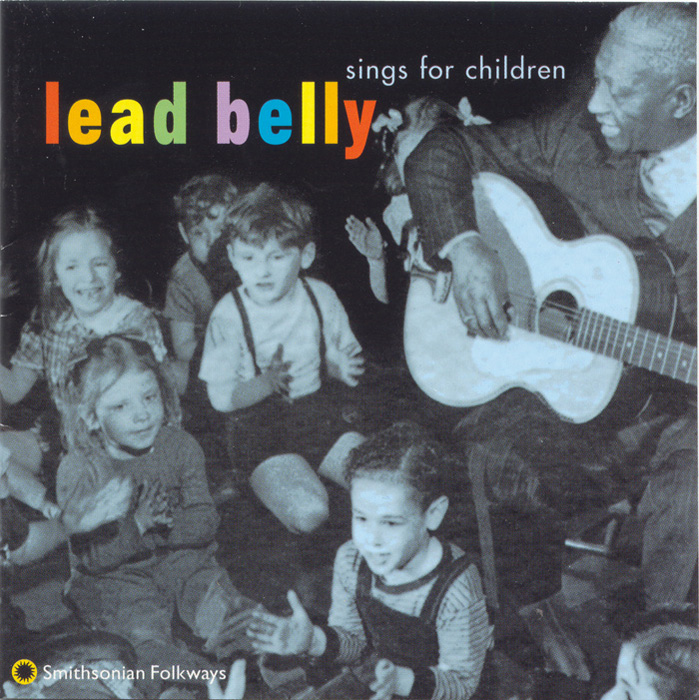
“Good Morning Blues”
from Lead Belly Sings for Children (1999) | SFW45047
- Discuss history of blues (use liner notes from Barbara Dane Sings the Blues, page 8)
- Review 12 bar blues form (attached)
- Play “Good Morning Blues”.
- Have students point to chords/measures as they are heard
- Play again and have students snap fingers on beats 2 & 4
- Review AAB vocal form (line-A, repeated once and then followed by a single line-B conclusion) and read together the lyrics to “Good Morning Blues” (attached- taken from liner notes).
- Discuss how B section relates to A sections through lyrics meanings, rhyme, meter
- Sing along with recording.

Good Morning Blues -lyrics taken from liner notes
(B section in italic for identification)
Well, good morning blues, blues how do you do
Well, good morning blues, blues how do you do
I'm doing all right well, good morning how are you.
I couldn't sleep last night, I was turning from side to side
Oh Lord, I was turning from side to side
I wasn't sad, I was just dissatisfied.
I couldn't sleep last night, you know the blues walking ‘round my bed,
Oh Lord, the blues walking 'round my bed
I went to eat my breakfast, the blues was in my bread.
Well good morning blues, blues how do you do.
Well, good morning blues, blues how do you do.
I'm doing all right, well, good morning how are you.
Assessment:
Students will demonstrate knowledge of form by pointing to measures of music as it is played and identifying I, IV, V chords and the AAB vocal sections. Students will engage in mature discussions on AAB lyrics and how they relate.
2. Completing a 12 Bar Vocal Blues

“Prison Bound”
from The Folkways Years, 1959-1973 (2000) | SFW40128
- Review 12 bar blues and AAB vocal form.
- Hand out A section lyric verses from “Prison Bound” (attached).
- Have students write an original B section that relates/completes A section
- Analyze and critique self/others through positive, mature feedback
- Read actual lyrics from “Prison Bound” and discuss original lyrics meaning, rhyme, and meter.
- Compare/contrast students’ B sections examples with original lyrics
- Sing along with recording.
“Prison Bound” worksheet
Write an original B verse to complete A sections given
A - Early One Morning the blues came falling down.
A - Early One Morning the blues came falling down.
B - ______________________________________________
A - When they had my trial, Baby you could not be found.
A - When they had my trial, Baby you could not be found.
B - ______________________________________________
A - All last night, I sat in my cell alone.
A - All last night, I sat in my cell alone.
B - ______________________________________________
A - Baby, you may never see my smiling face again.
A - Baby, you may never see my smiling face again.
B - ______________________________________________
A - Sometimes I wonder, why don’t you write to me?
A - Sometimes I wonder, why don’t you write to me?
B - ______________________________________________
Prison Bound - lyrics taken from liner notes
(B section in italic for identification)
Early One Morning the blues came falling down.
Early One Morning the blues came falling down.
All locked up in jail, now I’m prison bound.
When they had my trial, Baby you could not be found.
When they had my trial, Baby you could not be found.
Too late, mistreatin’ mama, your daddy’s prisoner bound.
All last night, I sat in my cell alone.
All last night, I sat in my cell alone.
I was thinking about you baby, and my happy home.
Baby, you may never see my smiling face again.
Baby, you may never see my smiling face again.
But you must always remember, that I have been your friend.
Sometimes I wonder, why don’t you write to me?
Sometimes I wonder, why don’t you write to me?
Now I’ve been a bad fellow, I never did intend to be.
Assessment:
Students will demonstrate knowledge of AAB form by completing original lyrics of the B section. Students will participate in mature discussions on lyric meanings, rhyme, meter, and how they relate.
3. Writing an Original 12 Bar Vocal Blues
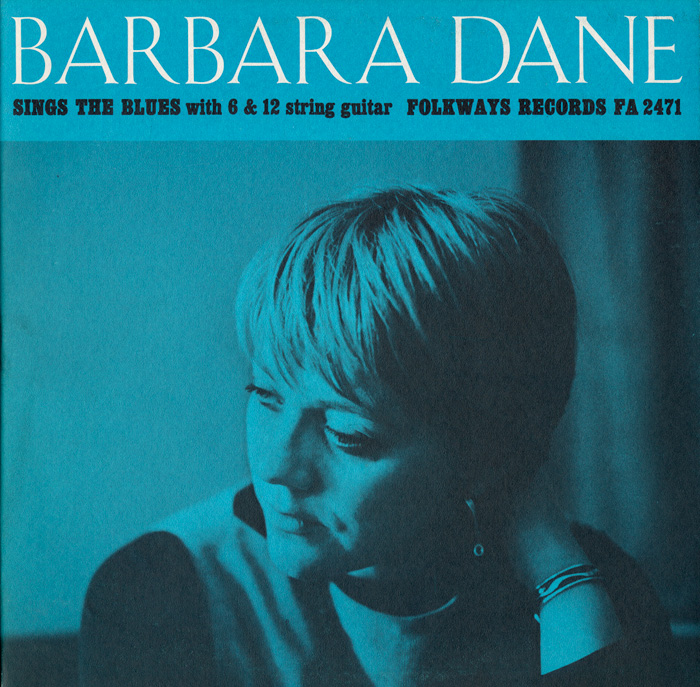
“Working People's Blues”
from Barbara Dane Sings the Blues (1964) | FW02471
- Review 12 bar blues and AAB vocal form.
- Read lyrics from “Working People’s Blues” and discuss lyric’s meaning, rhyme, and meter.
- Listen to recording and sing along
- Students will write original AAB blues lyrics (1-3 verses, worksheet attached).
- Share, analyze and critique self/others through positive, mature feedback
- Sing/speak with chord progression, at least one verse of each composition.
Working People’s Blues - lyrics taken from liner notes
Working people get the blues, from morn till late at night.
Working people get the blues, from morn till late at night.
It’s a cold-hearted feeling, when there ain’t no end in sight.
Forty long hours a week, fifty long weeks a year.
Forty long hours a week, fifty long weeks a year.
Such a big piece of life, makes me wonder what I’m doing here.
I try to hope for the future, see what tomorrow brings.
I try to hope for the future, see what tomorrow brings.
When I know in my heart, it’s going to be the same old thing.
Take your capitol gains, let me deduct the blues.
Take your capitol gains, let me deduct the blues.
I’ll have more money coming back, then a high rolling daddy can use.
Assessment:
Students will demonstrate knowledge of Blues and its AAB form by writing original lyrics. Students will participate in mature discussions on lyric meanings, rhyme, meter, and how they relate.
ORIGINAL BLUES WORKSHEET
(Write an original AAB Blues verse)
A - ______________________________________________
A - ______________________________________________
B - ______________________________________________
A - ______________________________________________
A - ______________________________________________
B - ______________________________________________
A - ______________________________________________
A - ______________________________________________
B - ______________________________________________



